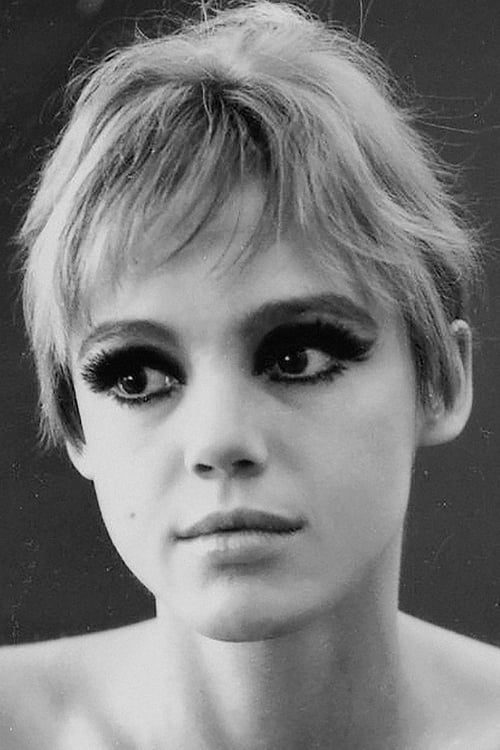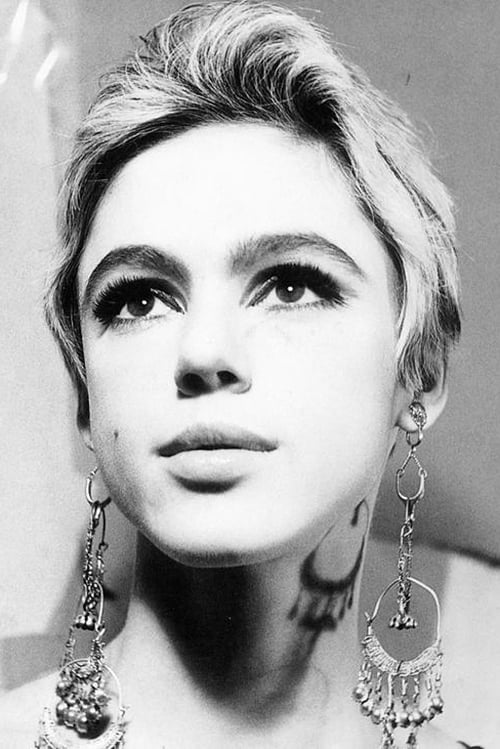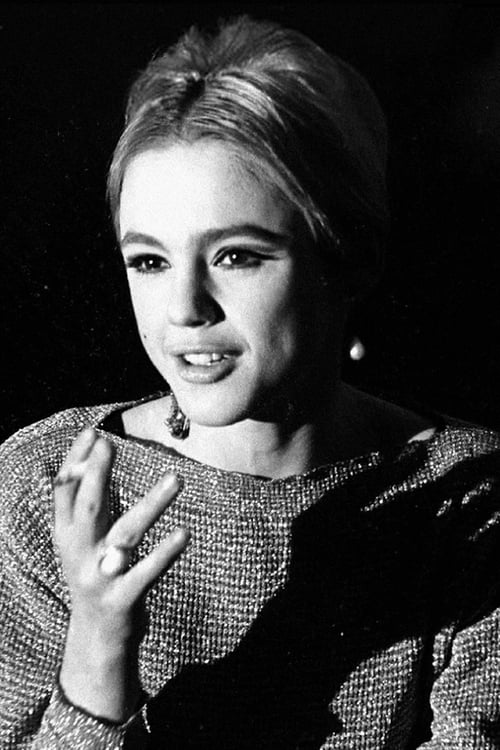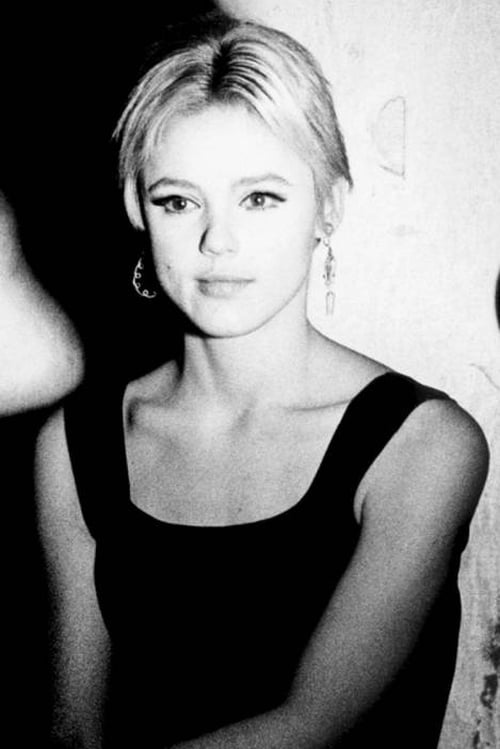Edie Sedgwick
Рождение : 1943-04-20, Santa Barbara, California, U.S.
Смерть : 1971-11-16
История
Edith Minturn Sedgwick was an American actress and fashion model. She is best known for being one of Andy Warhol's superstars. Sedgwick became known as "The Girl of the Year" in 1965 after starring in several of Warhol's short films in the 1960s. She was dubbed an "It Girl", while Vogue magazine also named her a "Youthquaker".

Self (archive footage)
Каждое поколение изобретает лекарство, которого заслуживает. В современной Америке, где люди конкурируют друг с другом всю жизнь и каждый хочет быть первым, стало невозможно существовать без приёма Аддералла и других опасных стимуляторов, которые влияют на жизнь и образ мышления целого поколения.

Self (archive footage)
Warhol Superstar Ultra Violet (Isabelle Colin Dufresne) and Lower East Side Icon Taylor Mead (Poet/Actor/Artist) share their stories of Manhattan in the 1960s.
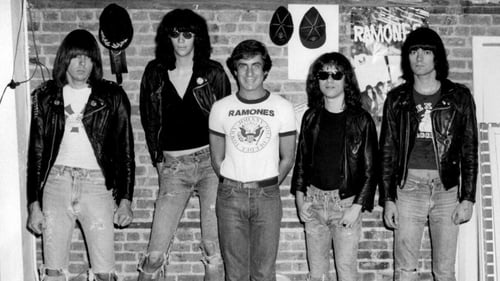
Self (archive footage)
DANNY SAYS is a documentary unveiling the amazing journey of Danny Fields. Fields has played a pivotal role in music and culture with seminal acts including: the Doors, the Velvet Underground, the Stooges, MC5, Nico, the Ramones and beyond.

Self (archive footage)
Model, film star, muse, socialite, icon. Edie Sedgwick was the very first "it" girl of the Andy Warhol Factory scene. The arc of her life traced the rise and fall of the 1960s recklessness. After being the toasted by the whole of New York City, Edie died alone of a drug overdose in California at the age of 28. She was both the harbinger of celebrity culture and someone who stood entirely outside of it, an artist who painted life, bravely and spontaneously, with her own hand.
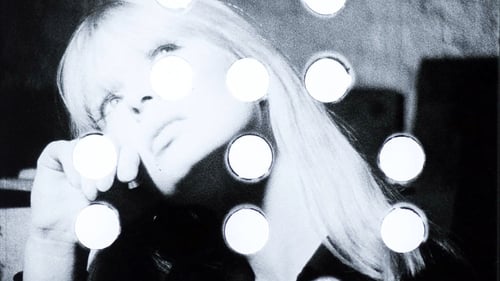
Herself
Between 1964 and 1966, Andy Warhol shot nearly 500 Screen Tests, beautiful and revealing portraits of hundreds of different individuals, from Warhol superstars and celebrities to friends or anyone he thought had "star potential". All visitors to his studio, the Factory. Subjects were captured in stark relief by a strong keylight, and filmed by Warhol with his stationary 16mm Bolex camera on silent, black and white, 100-foot rolls of film. The resulting two-and-a-half-minute film reels were then screened in slow motion, resulting in a fascinating collection of four-minute masterpieces that startle and entrance, mesmerizing in the purest sense of the word. Songwriters Dean Wareham and Britta Phillips, formerly of the band Luna and currently recording as Dean & Britta, incorporated original compositions as well as cover songs to create new soundtracks for the 13 films.
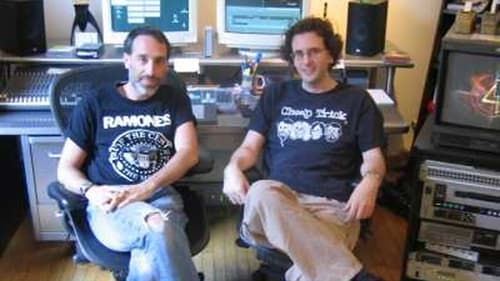
A years-in-the-making documentary on the legendary punk band the Ramones. Through a mixture of archival footage, archival and new interviews with all members of the band's various lineups, and new interviews with a number of their contemporaries, the film traces the peaks and valleys the band experienced over the course of its 20-plus year career before disbanding in 1995.
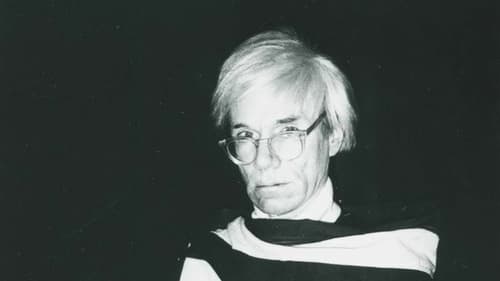
Self (archive footage)
Documentary portrait of Andy Warhol.
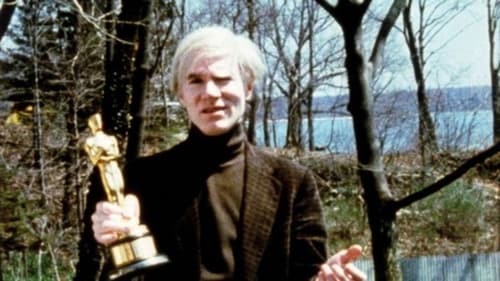
Self (archive footage)
This intimate portrait of Andy Warhol pulls together a unique library of material shot by New York film legend Jonas Mekas. Spanning from 1963 to 1990, the film features a cast of counterculture icons including Allen Ginsberg, George Maciunas, John Lennon, and Yoko Ono, as well as John and Caroline Kennedy, and Lee Radziwill (Jackie Kennedy Onassis's sister and Warhol muse)—to whom Mekas dedicates the film. The film features footage from the Velvet Underground's first public performance. A portrait of the remarkable life of arguable the twentieth century's most famous artist and leading iconographer.

Herself (archive footage)
Documentary on Andy Warhol's cinema of the sixties, made for Channel 4 in association with The Factory, MOMA and the Whitney Museum of Art and in collaboration with Simon Field.

Herself (archive footage)
The first major profile of the American Pop Art cult leader after his death in 1987 covers the whole of his life and work through interviews, clips from his films, and conversations with his family and superstar friends. Andy Warhol, the son of poor Czech immigrants, grew up in the industrial slums of Pittsburgh while dreaming of Hollywood stars. He went on to become a star himself.

Susan Superstar
Warhol superstar and icon of sixties bohemia Edie Sedgwick delivers her final performance in this semiautobiographical look at the price of fame. Fiction and documentary—including snippets from Sedgwick’s own audio dairies—mingle in a freewheeling portrait of Susan Superstar (Sedgwick), a New York celebrity on a drug-fueled downward slide that mirrors Sedgwick’s own self-destructive spiral. Released after her death from an overdose of barbiturates, CIAO! MANHATTAN endures as a testament to Sedgwick’s unique magnetism and as a haunting elegy for the counterculture she embodied.
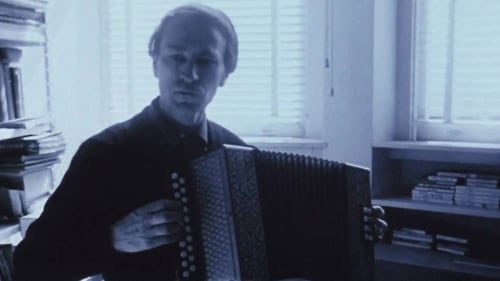
Self
An epic portrait of the New York avant-garde art scene of the 60s.
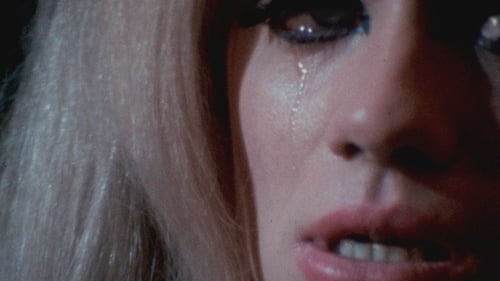
Self - Jury Member
In 1967, New York City is host to the Miss All-American Camp Beauty Pageant. This documentary takes a look behind the scenes, transporting the viewer into rehearsals and dressing rooms as the drag queen subculture prepares for this big national beauty contest. Jack/Sabrina is the mistress of ceremonies, and their protégé, Miss Harlow, is in the competition. But, as the pageant approaches, the glamorous contestants veer from camaraderie to tension.


Photographed entirely in color, Four Stars was projected in its complete length of nearly 25 hours (allowing for projection overlap of the 35-minute reels) only once, at the Film-Makers' Cinematheque in the basement of the now-demolished Wurlitzer Building at 125 West 41st Street in New York City. The imagery in the film is dense, wearying and beautiful, but ultimately hard to decipher, for, in contrast to his earlier, and more famous film Chelsea Girls, made in 1966, Warhol directed that two reels be screened simultaneously on top of each other on a single screen, rather than side-by-side.

Herself
... with real-life portraits of Jayne Mansfield, Frak O'Hara, Ruth Ford, Ned Rorem, Virgil Thomson, Claes Oldenburg, Roy Lichtenstein, William Burroughs, Andy Warhol, Rudy Gernreich, Jonas Mekas and others.

Herself
This pop movie about Warhol includes appearances by Henry Geldzahler, Edie Sedgwick and The Velvet Underground.

Herself
Documentarians Juan Drago and Bruce Torbet follow a surprisingly relaxed and open Andy Warhol, at the peak of his powers in 1965 and 1966, around his bustling original "Factory" in midtown Manhattan. Warhol experiments with an early videotape machine, recording a beautiful, laughing Edie Sedgwick - his "superstar" of the moment - for the video portion of "Outer and Inner Space," his filmed record of the "live" Sedgwick juxtaposed against her video image on an adjacent monitor. Also captured is a Warhol show at the Leo Castelli gallery, including the famous Mylar "Clouds," as various unnamed art dealers and critics muse in voiceover about the meaning and significance of Warhol's work.

Herself
Screen Test of Edie Sedgwick and Kipp Stagg (aka Bima Stagg).
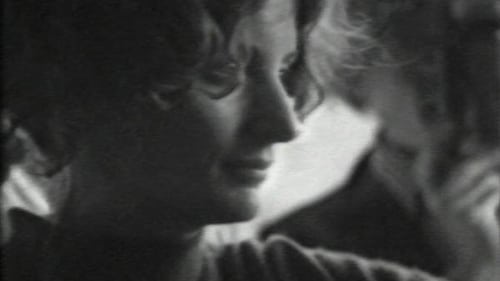
Self
Легендарный фильм-марафон, рассказывающий истории 12 девушек, живущих в отеле «Челси», где запечатлено само здание и экстравагантные ночные бабочки, порхавшие в этом полубогемном районе Манхэттена.

Herself
Velvet Underground's first public appearance.

This program profiles Andy Warhol and Roy Lichtenstein, two of pop art's greatest icons. Back-to-back interviews highlight their differences. The voluble Lichtenstein, interviewed in his studio, discusses his methods and the use of familiar objects in his art. The reticent Warhol baits the interviewer, who attempts to extract concrete statements from the elusive artist. The Warhol segment is supplemented by footage of his band, the Velvet Underground; a clip of one of his short films, "Nancy Worthington Fish"; and brief comments from Edie Sedgwick, one of Warhol's proteges.

Instructed by Warhol to write a vehicle for Edie Sedgwick in a “completely white” setting, scenarist Ronald Tavel created one of Warhol’s most iconic films. Here a group of performers of all stripes – the sink and litter basket receive equal billing to the human actors – are forced into Warhol and Tavel’s cruelly comical theatre of the absurd. Inside this cramped domestic space, boredom, confusion and a sense of existential dread hang heavy in the air. Warhol and Tavel transform the modern 1960s kitchen – replete with the latest gadgets and conveniences – into a chaotic laboratory for self-creation and interpersonal conflict.

Lupe Velez
Andy Warhol’s film Lupe (1966) restages the mythic account of one celebrity’s suicide as a strategic ploy to envision another’s. Lupe is known to be Warhol’s take on Kenneth Anger’s own fabricated account of Lupe Vélez’s (also known as Hollywood’s ‘Mexican Spitfire’) suicide; Edie Sedgwick is cast as Vélez living out her last morning, evening and final dramatic exit. (berlinfilmjournal.com)

The Velvet Underground's first public appearance, filmed in Super 8 at a Psychiatrist's Convention, at the Delmonico Hotel, New York, January 14, 1966. Andy Warhol was invited to speak at the annual banquet of the New York Society for Clinical Psychiatry. He brought along the Velvets and other factory regulars.

Edie Sedgwick
A 16mm Warhol film of Edie Sedgwick sitting in front of a television monitor on which is playing a prerecorded videotape of herself. On the videotape, Edie is positioned on the left side of the frame, facing right; she is talking to an unseen person off-screen to our right. In the film, the “real” or “live” Edie Sedgwick is seated on the right side of the film frame, with her video image behind her, and she is talking to an unseen person off-screen to our left. The effect of this setup is that it sometimes creates the rather strange illusion that we are watching Edie in conversation with her own video image.

Herself
Andy Warhol (Rene Ricard) invites a friend (Edie Sedgwick) over to his apartment one evening to discuss his career. As they talk, the truth about how Warhol uses and then throws people away comes out. The woman begins to come undone and reveals to Warhol how he ruined her life with drugs and false promises of fame.

herself
An hour-long close-up of Edie singing along to rock songs, making herself up, and talking.

Self
The films were made between 1964 and 1966 at Warhol's Factory studio in New York City. Subjects were captured in stark relief by a strong key light, and filmed by Warhol with his stationary 16mm Bolex camera on silent, black and white, 100-foot rolls of film at 24 frames per second. The resulting two-and-a-half-minute film reels were then screened in 'slow motion' at 16 frames per second.

Edie Sedgwick hanging out at her apartment with Ondine and others in an alcohol and amphetamine–fueled talkfest.

Two nuns take a bath, then meet a sailor on the Staten Island Ferry.

A melange of casual talking, food fights, and folk singing. The film includes Eric Andersen with his guitar, singing his lines, and leading Edie Sedgwick and her friends in unscripted sing-alongs of popular songs including "Puff the Magic Dragon" and "The Battle Hymn of the Republic".

Warhol plunked a horse named Mighty Byrd in the middle of the Factory for this dark, homoerotic take on the classic oater that later anticipates his later western epic Lonesome Cowboys.

Herself
The movie has a fixed point of view showing a bed with two characters on it, Sedgwick and Piserchio. Chuck Wein is heard speaking but is just out of view. Sedgwick is wearing a lace bra and panties, and Piserchio, wearing only jockey shorts, engage in flirting and light kissing. Wein asks Sedgwick questions seemingly designed to harass and annoy her. Piserchio is more or less a bystander not interacting with Wein. The dialogue seems created adlib and no conclusions are reached in the film. The only conceivable climax is when Sedgwick finally becomes so mad, she throws a glass ashtray at Wein, breaking it.

The film begins with a close-up of a table in a restaurant covered with a checkered cloth, in a composition that strongly suggests a still life. It lingers there for a long time before beginning a slow outward zoom. All the while we overhear poorly recorded snippets of conversation. We see hands move in and out of the frame, lifting glasses and tapping cigarettes. We recognise Edie Sedgwick by her signature dancer's tights and jewellery. The group discuss a recent trip to Tangier; the conversation returns frequently to past and upcoming travel. At one point, a whole, uncut pineapple is delivered to their table, despite the fact that they are in an Italian restaurant: it is not meant to be eaten, but to evoke the possibility of adventure in exotic, semi-imaginary lands.

Poor Little Rich Girl
A young, jobless woman stays in bed, reads, talks on the phone, smokes cigarettes, makes fresh coffee, and tries on some clothes from a large wardrobe.

Extra
Andy Warhol’s screen adaptation of Burgess's "A Clockwork Orange”.
![Screen Test [ST310]: Edie Sedgwick](/assets/images/no-backdrop.png)
Begins with a close-up of Edie Sedgwick powdering her face with a powder puff. She is wearing two different earrings and has been lit harshly from the right. She holds her hand up against the light, laughs, and says something to the camera. The camera then zooms out, showing her seated on a stool.

Inspired by Bibbe Hansen's experiences in a juvenile detention center.

Herself
Andy directs Edie for a screen test.

Self
This compilation of Gerard Malanga's short films consists of a collection of extremely rare footage and film portraits providing candid and interesting glimpses of Bob Dylan, Salvador Dalí, Jane Fonda and The Velvet Underground among other 1960s icons and featuring original music by Angus MacLise, who was the first drummer to perform with The Velvet Underground.
